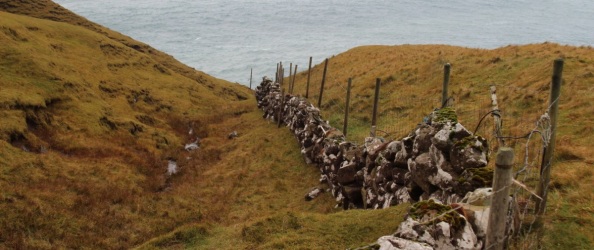
I finally made it to the Faroe Islands. I had originally planned to go in August, but had to postpone the trip due to border regulations. A couple of days before my flight in August, I suddenly found out that I needed a passport to travel from London to the Faroe Islands. I only have a national ID card, so this was bad news. I was also told, that to travel from Denmark to the Faroe Islands I would not need a passport, but my ID card should be fine. Utterly confused, I decided to trust that the airline knew what it was talking about, I re-arranged the trip to go through Denmark at the end of October.
I took it as an opportunity to add a city trip to Copenhagen. When I arrived there, my first port of call was the airline help desk. I wanted to double check that I would indeed make my flight to the Faroes a few days later. The friendly lady finally enlightened me: While the UK is part of the EU, it is not part of Schengen. The Faroe Islands on the other hand, are not part of the EU, but a member of Schengen. Thus, leaving the UK to travel to the Faroes, I would be leaving the EU to enter Schengen – and need a passport. Going to Denmark, I stayed within the EU and entered Schengen, traveling from there, I left the EU, but stayed in Schengen. Both of which I can do on my national ID card.
As far as my personal experience go, this one really brought home how redidculous border regulations are.
So I did manage to get there. It was a surprisingly long drive from the airport to Torshavn. Only later did I realise that I wasn’t going from one place on an island to another place on the same island, but the taxi had actually taken me from one island to the next – through a tunnel running under the Atlantic Ocean.
So, this is what the Faroe Islands look like:
They consist of chunks of volcanic rock with a little bit of top soil in the middle of the Atlantic Ocean. There isn’t enough soil for anything to grow but grass and very few flowers. Trees only occur in gardens in the towns. Pretty much all of it looks like the above. So after 30 minutes driving around, you feel like you’ve seen it all. Maybe the weather was part of it, but to me it all looked a bit drab and dreary. There just isn’t really anything there. On top of that, the clouds tend to hang oppressively low in the heavens, so low that they often obscure the top of the hills. As soon as you leave the coastal line, you are surrounded by hills, with no horizon at all, you can feel the heaviness of the rock against your feet and the sky looks like it’s about to fall on your head. You end up literally hemmed in on all sides, the eye doesn’t really have anything to hold on to, and the atmosphere created is somewhat claustrophobic.
The islands, at least the bigger ones, are connected by tunnels blown into bedrock under the Atlantic. The tunnels have rough rock protruding all around you, and often a quite steep slope. Some are just wide enough for a small bus, and have no lighting at all. Going through them feels a little like you’re on your way to Mordor.
There is a sprinkling of towns and villages, some of them as small as 15 houses. Only during the past decade were many of them connected by road and tunnel, before they would only have been accessible by boat, helicopter, or a hike over the next hilltop.
I think this is Gasaldur, one of those villages that you can now drive to:
When walking around, we discovered an old rail car, which must have been used to transport goods from boats to the village not too long ago. Seeing how there are only sheep, an no agriculture to speak off, it must have been a hell of a job providing the locals with food and daily necessities.
 The path seems to stop right above the cliffs, and it is not until you get to the very edge that you see the steps going down to what must have been the dock, now in a state of disrepair.
The path seems to stop right above the cliffs, and it is not until you get to the very edge that you see the steps going down to what must have been the dock, now in a state of disrepair.
I can only imagine the level of isolation that Gasaldur must have existed in until only a few years ago. Now a few minute drive from the next town, thanks to one of the Faroese Mordor tunnels, it must have been really cut off. And I counted only a couple dozen houses or so. Modern transport and the connectivity we have gotten so accustomed to are something amazing and awe inspiring.
When climbing down, you have crumbling cliffs to your left, and a rusted old pipe as a handrail, old enough that it isn’t attached to anything anymore in a lot of places. To your right you have a steep drop down the face of more cliffs to the ocean. And each step almost came up to my knee.
This adventure really made me realise that – with my desk job and all – I do need to do more exercise, I had sore muscles for a few days afterwards!
More to follow…








Posted on November 6, 2011
0